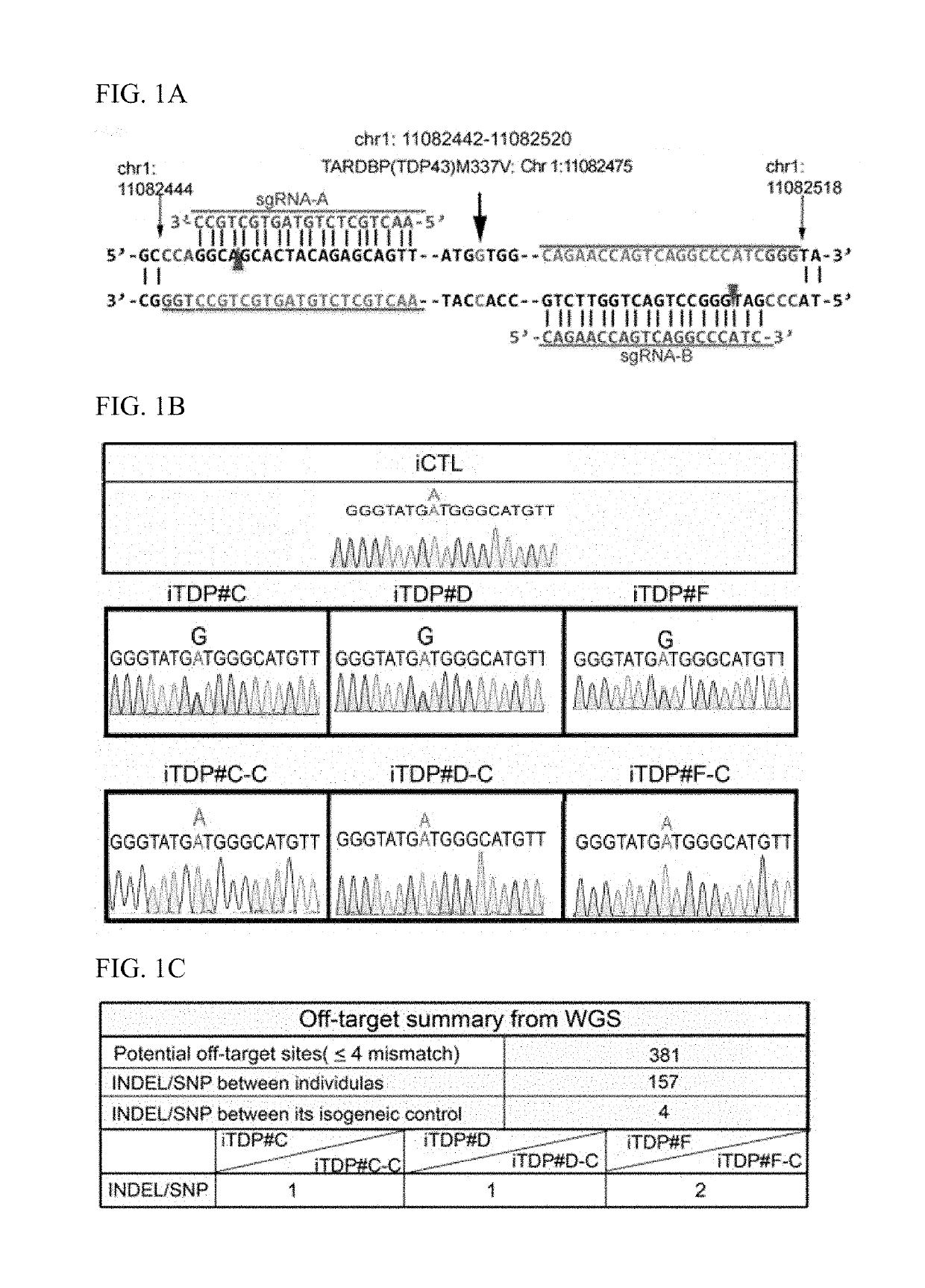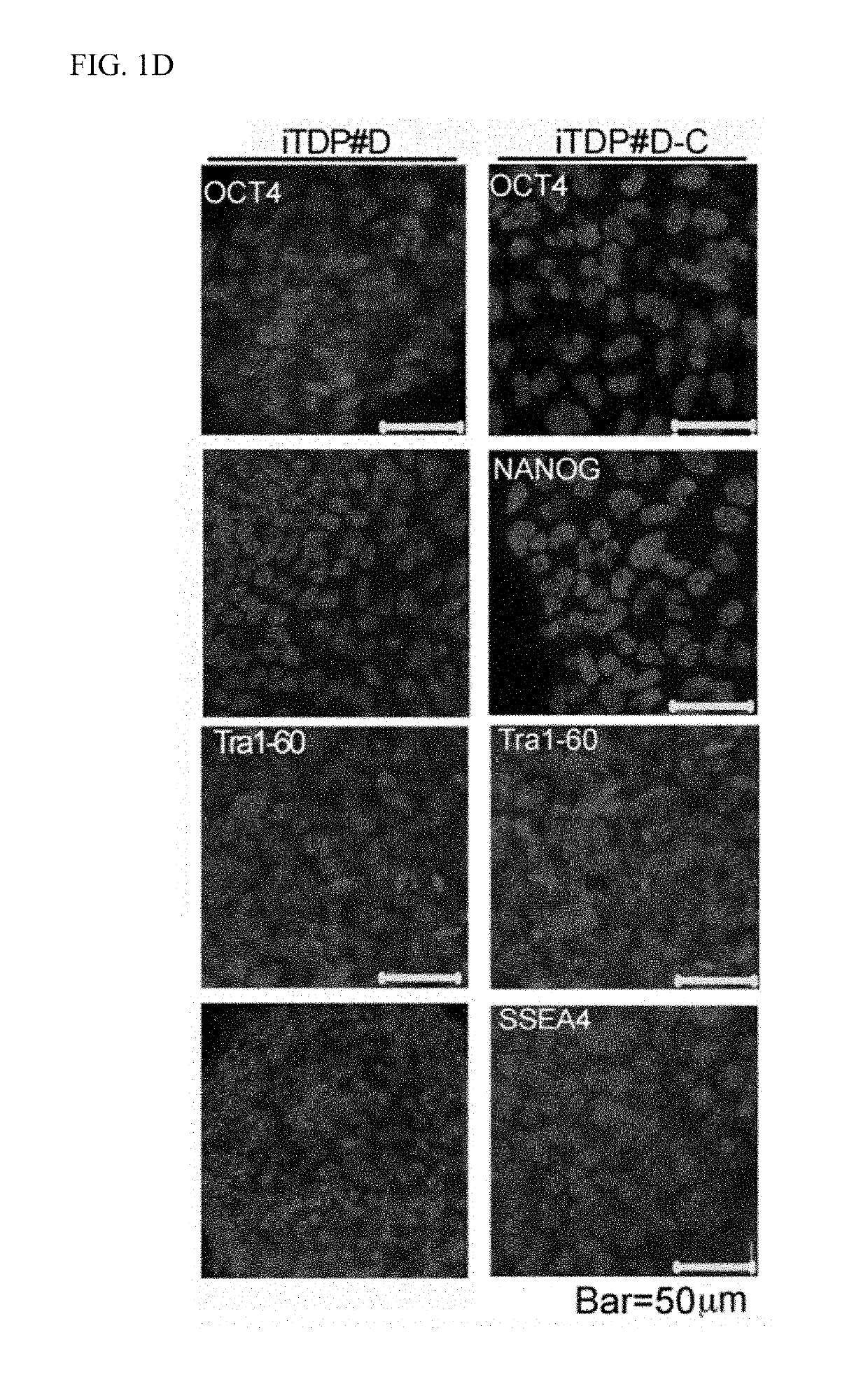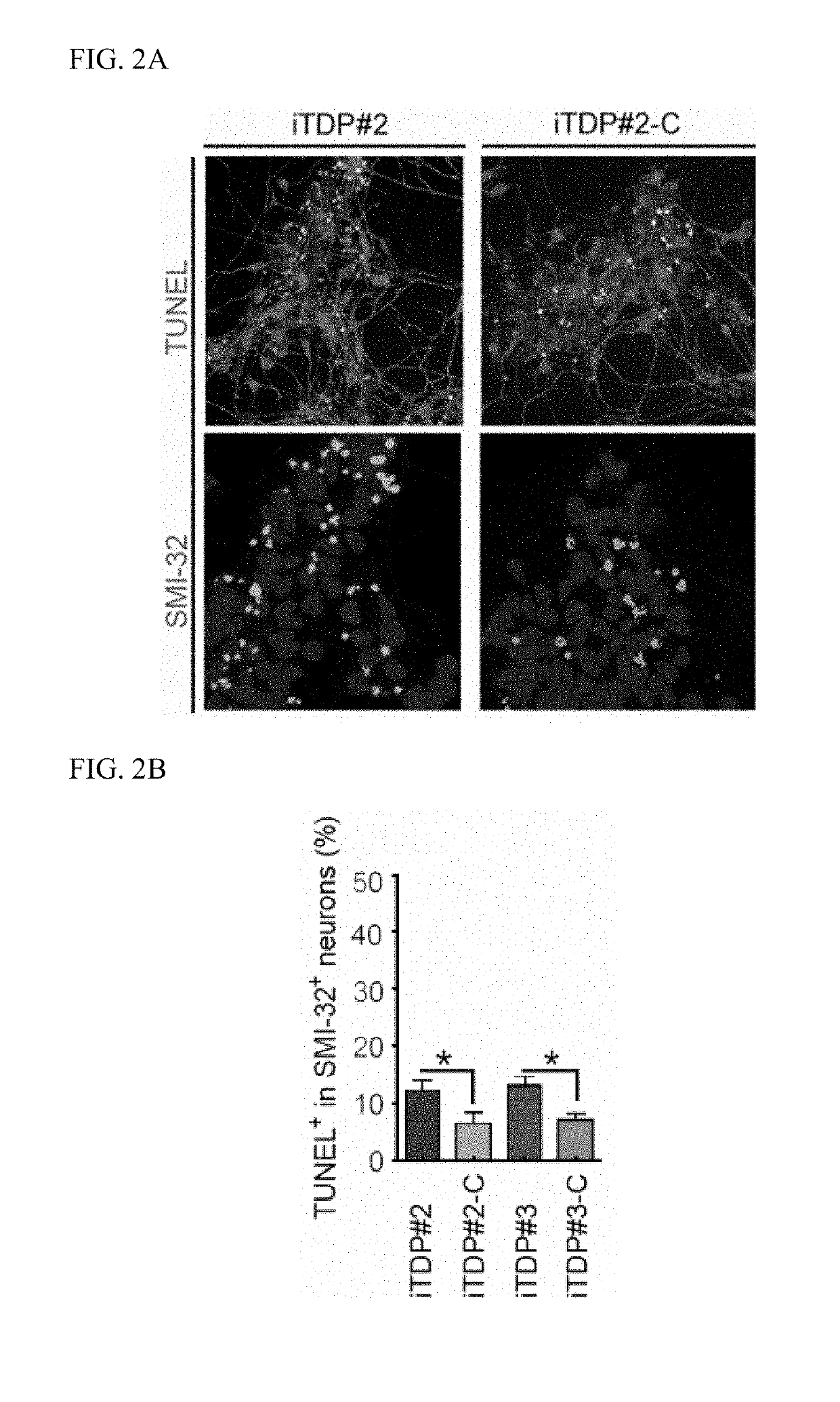Nuclear paraspeckle assembly transcript 1 as therapeutic targeting in neurodegeneration
a technology of neurodegeneration and nuclear paraspeckle, which is applied in the direction of nervous disorders, medical preparations, drug compositions, etc., can solve the problems of lack of access to patient motor neurons, insufficient als modeling systems for drug development, and limited effect, so as to reduce neurodegeneration and/or tdp43 associated aggregation
- Summary
- Abstract
- Description
- Claims
- Application Information
AI Technical Summary
Benefits of technology
Problems solved by technology
Method used
Image
Examples
example 1
Correction of TDP43-M337V in iPSCs Derived from Three ALS Patients
[0090]We had harvested and identified dermal fibroblasts from three familial ALS patients carrying TDP43 heterozygous mutation at M337V denoted as iTDP#C, iTDP#D and iTDP#F. The iPSCs were derived by transducing four transcription factors (OCT4, SOX2, KLF4 and c-MYC) into dermal fibroblast derived from individual patients, and denoted as iTDP#1, iTDP#2 and iTDP#3. Patient profiles are described in Table 1. Validation of pluripotency were first performed by detecting endogenous pluripotent transcripts including OCT4, SOX2, KLF4 and c-MYC. To determine whether the ALS phenotypes were caused by TDP43-M337V, the CRISPR-Cas9 double nicking approach was used for correcting 1006G>A on the SNP allele. Targeting sites of the paired-guide RNAs (gRNA) are shown in FIG. 1A. Considering gRNA off-target effects and targeting efficiency, Cas9 nickase and homologous recombination were adapted along with selection markers. Sanger sequ...
example 2
Recapitulation of TDP43-M337V Caused TDP43 Pathology and Neuron Degeneration in iTDP Derived Motor Neurons
[0092]Motor neuron differentiation was carried out based on the reported protocol with minor adjustment (FIG. 3A). Significant amounts of MNs were elevated by increasing retinoic acid (RA) and purmorphamine (SHH signaling agonist) from 0.5 μM to 1 μM since day 12 (FIG. 10). In FIG. 3B, the MN validation was performed by imnunostaining including MAP2, TUJ1, ISL-1, HB9, SMI32 and ChAT. The capabilities of generating HB9+ MNs were not affected by TDP43-M337V by comparing counted cell numbers between each pair derived MNs (FIG. 3C).
[0093]Pathogenic mutations in TDP-43 were reported in familial ALS patients. The defined pathology in ALS includes apoptosis, mitochondria dysfunction and TDP43 mislocalization / oligomerization / aggregation. To determine whether TDP43-M337V manifest ALS phenotypes under our culture conditions, we first investigated the lethal MN degeneration. At day 25 of i...
example 3
Endogenous NEAT1 Enhances Cytoplasmic TDP43 Aggregation and Motor Neuron Death
[0097]TDP-43 is known as RNA binding protein involving RNA processing, metabolism and so on. In global microarray analysis of lncRNA expression from purified HB9+MNs, aberrations in certain lncRNAs were identified between iTDP#3 and iTDP#3-C. As seen in FIGS. 4A to 4C, several distinct lncRNAs were identified in iTDP#3 derived MNs. Validation by quantitative RT-PCR, we have identified that the transcript of NEAT1 were upregulated in three iTDPs. RNA in situ hybridization were performed to validate NEAT1 expression pattern in SMI32+ MNs. In iTDP#2 and iTDP#3 compared with iTDP#2-C and iTDP#3-C separately, the relatively higher intensity of NEAT1 was observed. Similar results were observed in the proportion of cells with NEAT1. Interestingly, cytoplasmic NEAT1 was also observed in MNs derived from iTDP#1, iTDP#2 and iTDP#3; however, the majority of NEAT1 were in the nucleus after genetic correction (FIGS. 4D...
PUM
| Property | Measurement | Unit |
|---|---|---|
| short nucleic acid | aaaaa | aaaaa |
| MN | aaaaa | aaaaa |
| time | aaaaa | aaaaa |
Abstract
Description
Claims
Application Information
 Login to View More
Login to View More - R&D
- Intellectual Property
- Life Sciences
- Materials
- Tech Scout
- Unparalleled Data Quality
- Higher Quality Content
- 60% Fewer Hallucinations
Browse by: Latest US Patents, China's latest patents, Technical Efficacy Thesaurus, Application Domain, Technology Topic, Popular Technical Reports.
© 2025 PatSnap. All rights reserved.Legal|Privacy policy|Modern Slavery Act Transparency Statement|Sitemap|About US| Contact US: help@patsnap.com



